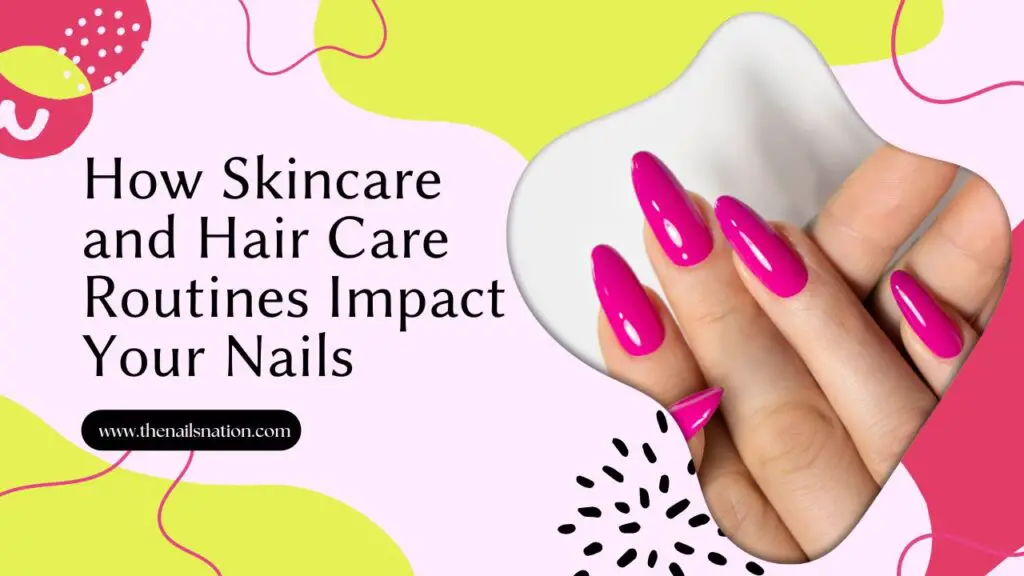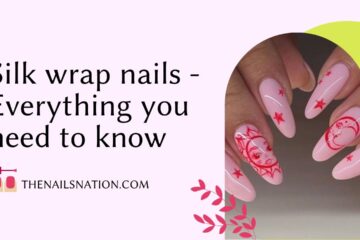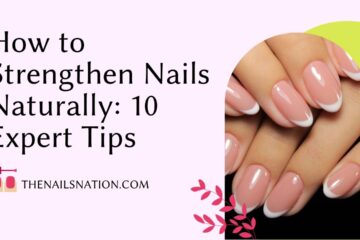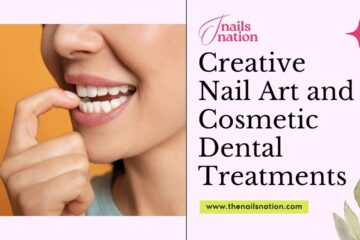Keeping your nails healthy requires more than just getting regular manicures and staying away from harsh chemicals; it also entails doing more with your skincare and hair care regimen.
The following are some ways that the items and techniques in your skin and hair care routine can have a big impact on how strong and healthy your nails are.

The Connection Between Skincare and Nail Health
Ingredients Matter
Ingredients good for nail health can be found in many skincare products. For example, when applied to the cuticles, hyaluronic acid can strengthen nails by offering deep hydration. Likewise, ceramides aid in repairing and shielding the skin and nail’s natural barrier from environmental harm and glycerin draws moisture to the nail to increase its suppleness and reduce breakage.
Moisturizing Effects
Regularly moisturizing and lotioning your hands helps to protect your nails from breaking off and keeps your skin supple. It’s important to use a rich moisturizer to preserve nail resilience in the winter as the dry air can make nails more prone to cracking.
Exfoliation Benefits
Through the removal of dead skin cells and improvement of blood circulation, a mild exfoliation around the nails can promote healthier and faster nail growth. Items with mild acid content such as alpha-hydroxy acids (AHAs) have been shown to be especially useful in encouraging cell renewal while protecting the sensitive cuticle region.
How Hair Care Influences Nail Health
Nutrient Sharing
Your nails benefit from the same nutrients that encourage strong glossy hair. Hair and nails require keratin which is produced with the help of biotin, which is frequently included in hair supplements. The nail bed is similarly nourished and hydrated by omega-3 fatty acids which encourage healthier growth.
Product Transfer
Some of the healthy ingredients in hair products may come into contact with the nails when being applied. For instance, if natural oils from hair conditioners like coconut or argan oil come into contact with nails while being applied, they can also strengthen and moisturize them.
Scalp and Nail Health
Improved nail growth is also a result of healthy blood flow to the scalp which is facilitated by frequent scalp massages. By enhancing general circulation, ingredients that calm and nourish the scalp—like peppermint or tea tree oil—may have an indirect positive impact on nail health.
Integrating Nail Care into Your Routines
Choose the Right Products
Select skincare and hair care products that are free of harsh chemicals and contain natural oils. Steer clear of products containing alcohol or other drying agents as they can dehydrate your nails and skin leaving them brittle and dry.
Routine Adjustments
You can greatly nourish and protect your nails by adding a small step to your routine like rubbing your cuticles with the leftover oil or cream from your skincare or hair treatment. This technique strengthens nails and seals moisture.
Regular Assessments
Keep an eye on how your nails respond to various products or adjustments to your regimen. Significant alterations such as heightened brittleness, peeling or sluggish growth may suggest that a product is negatively impacting the health of your nails.
Tips for Enhancing Nail Health through Daily Routines
- Hydration: Eating a diet high in vitamins and minerals and drinking plenty of water both contribute to strong resilient nails. Furthermore, staying hydrated helps keep the nails surface free of ridges which can give them a smoother, more polished appearance.
- Careful Handling: To prevent damage, refrain from using your nails as tools. Instead, when opening or scraping, use the proper tools. Splitting is less likely when nails are handled carefully and consistently to preserve their natural integrity and shape.
- Protective Measures: Gloves act as a barrier against moisture and abrasive materials so wearing them while handling chemicals or water can help avoid possible nail damage. In addition to providing protection from drying elements, protective gloves also help to preserve the health of the cuticles.
- Regular Maintenance: Preventing snags and tears which can result in additional damage is made easier by keeping nails well-trimmed and filed. Because good hygiene can keep harmful bacteria from growing, nails that are regularly taken care of are less likely to get fungal infections.
- Professional Consultation: Should nail problems continue, seeking advice from a professional manicurist or dermatologist can offer valuable insights and customized treatment options. In addition to offering individualized care, a professional can advise you on the best products for your particular nail type and any particular problems you may be having.
You may approach beauty and wellness holistically and encourage not only vibrant skin and luscious locks, but also strong healthy nails by knowing the intersections between skincare, hair care and nail health. Your nails will be as healthy as they are attractive if you incorporate these suggestions into your daily routines.




